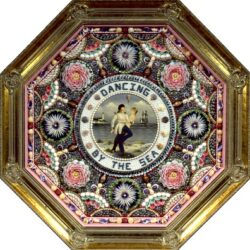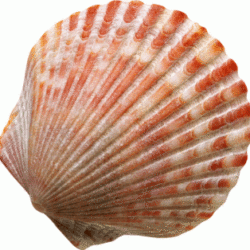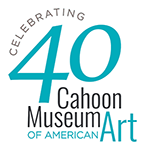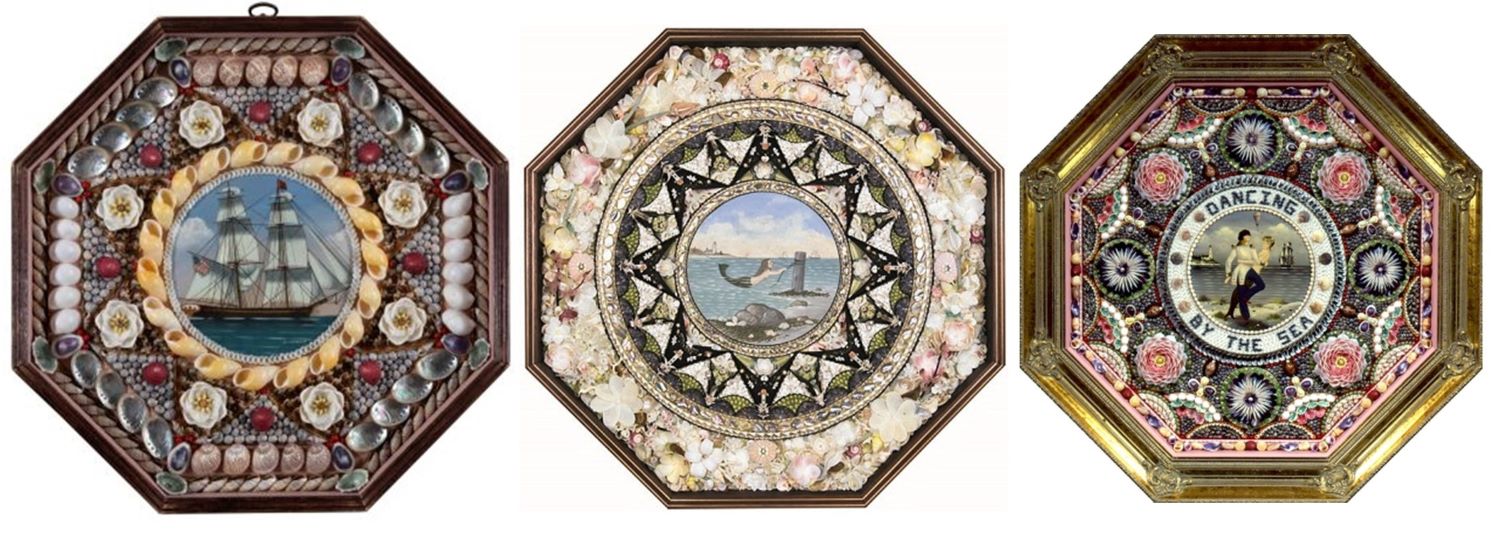The Real Story of Sailor’s Valentines
Curious scholars wondered how sailors could have used all the components and equipment needed to create a shell mosaic aboard a ship, including large quantities of tiny shells, wood, nails, cotton, glue, wax, cardboard, newspaper, colored paper, varnish, glass, hinges, screws, hooks and eyes, paint and gilding.
And then, of the hundreds of thousands of species of shells in the world, only about thirty-five -all native to the West Indies- appear in these valentines. While scrimshaw artifacts were diverse and varied, there appeared to be a standardized form to these sailors valentines. How could sailors on different ships, sailing different seas, create something so alike?
Spyglass Scenes and Nautical Fantasies: An Artistic Collaboration
How did Ralph and Martha Cahoon come to love and make the Sailors Valentines in the Cahoon Museum Collection?
Ralph and Bernie
Together between 1977 and 1982, Ralph Cahoon (1910-1982) and Bernard Woodman (1920-1986) created dozens of delicate and charming sailors valentines, combining Bernie’s beautiful shellwork with Ralph’s whimsical, nautical fantasies. In one piece, a sailor and a mermaid dance by the sea, encircled by floral rosettes.
Their artistic collaboration served as a diversion from personal struggles in their lives at this time. Bernie and Ralph had met each other in Alcoholics Anonymous. The men developed a close and supportive friendship which -while it helped them stay sober- was built on creative interests far more than their mutual struggle with alcohol.

Bernie’s Workshop
Bernie described himself as a “self-taught designer and craftsman.” He created his own techniques and designs for making sailors valentines. He bought thousands of shells in gallon containers from wholesale suppliers in Florida and California, which he painstakingly sorted by size, color, and type. He also made his own wooden boxes in sizes from six to twenty inches across.
Bernie’s process began with a stack of clear plastic discs. He formed the flowers layer by layer, using tweezers or a beeswax-tipped toothpick to pick up the tiny shells. Both fast-setting clear glue and hot wax glue were used to hold them in place, and he gently lifted the completed flower from the cap when it was dry. He made more than twenty varieties of flowers in various hues, ranging from the most-often-used pale pink to white, reds, yellows, and darker colors.
He sketched his original designs in pencil onto the bottom of a wooden octagonal box, outlined the various shapes in braid, and set to work filling in the spaces with shells. Bernie did a “dry run” first to make sure the contrast and blend of colors was correct and then glued the flowers and shells in place. Each valentine was Bernie’s own creation, but he preferred purely traditional designs.
“There is no way I can say how long it takes me to make one of these valentines,” Bernie explained, “because I work a little and sit a little. Sometimes I get up at three in the morning because I’m in pain, and I sort shells or start gluing to keep my mind occupied.” He said that he did not make a profit on the valenties he sold, because they took so much time and money. “My success has been artistic rather than financial,” Bernie stated, “but I enjoy making these Sailors Valentines so much that it doesn’t really matter.”

The Tradition Continued…
Martha’s Rondels and the Cahoon Sailors Valentines
After Ralph died in 1982, Bernie commissioned Martha Cahoon to paint spyglass scenes for his valentines. He typically encircled the paintings with a ring of shell flowers, choosing maybe three or four varieties from the more than twenty he taught himself to make.

What is a Sea Shell?
Sea shells come from mollusks, a large group of marine animals including clams, mussels, and oysters, which exude shells as a protective covering. Shells are excreted from the outer surface of the animal called the mantle and are made up mostly of calcium carbonate.
Mollusks are a critical component of the world’s food web and a a source of irreplaceable biodiversity. They are the most diverse group of animals in the world’s oceans, and the second most diverse group on Earth. They are present in virtually all of Earth’s natural environments and ecosystems, including deserts, cold mountain springs, rainforests, and the deepest ocean trenches. If nothing else, in addition to their status as a highly diverse and widespread group of animals, mollusks are also important to humans as food and as sources of inspiration for materials and products in contemporary science, medicine, and engineering. And let’s not forget about the beautiful shells they make.


